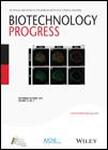版权所有:内蒙古大学图书馆 技术提供:维普资讯• 智图
内蒙古自治区呼和浩特市赛罕区大学西街235号 邮编: 010021

作者机构:Michigan State Univ Dept Biochem & Mol Biol E Lansing MI USA Michigan State Univ Dept Plant Biol E Lansing MI USA Michigan State Univ Dept Biochem & Mol Biol 603 Wilson Rd E Lansing MI 48823 USA
出 版 物:《BIOTECHNOLOGY PROGRESS》 (生物技术进展)
年 卷 期:2024年第40卷第1期
页 面:e3413-e3413页
核心收录:
学科分类:0832[工学-食品科学与工程(可授工学、农学学位)] 08[工学] 09[农学] 0901[农学-作物学] 0836[工学-生物工程] 090102[农学-作物遗传育种]
基 金:Biological and Environmental Research [DE-SC0018269] Office of Science (BER), U.S. Department of Energy [DGE-1828149, T32-GM110523] NSF Research Traineeship Program National Institute of General Medical Sciences (NIGMS) of the NIH
主 题:constraint-based modeling flux balance analysis metabolic flux analysis metabolic modeling model selection model validation
摘 要:13C-Metabolic Flux Analysis (13C-MFA) and Flux Balance Analysis (FBA) are widely used to investigate the operation of biochemical networks in both biological and biotechnological research. Both methods use metabolic reaction network models of metabolism operating at steady state so that reaction rates (fluxes) and the levels of metabolic intermediates are constrained to be invariant. They provide estimated (MFA) or predicted (FBA) values of the fluxes through the network in vivo, which cannot be measured directly. These fluxes can shed light on basic biology and have been successfully used to inform metabolic engineering strategies. Several approaches have been taken to test the reliability of estimates and predictions from constraint-based methods and to compare alternative model architectures. Despite advances in other areas of the statistical evaluation of metabolic models, such as the quantification of flux estimate uncertainty, validation and model selection methods have been underappreciated and underexplored. We review the history and state-of-the-art in constraint-based metabolic model validation and model selection. Applications and limitations of the chi 2-test of goodness-of-fit, the most widely used quantitative validation and selection approach in 13C-MFA, are discussed, and complementary and alternative forms of validation and selection are proposed. A combined model validation and selection framework for 13C-MFA incorporating metabolite pool size information that leverages new developments in the field is presented and advocated for. Finally, we discuss how adopting robust validation and selection procedures can enhance confidence in constraint-based modeling as a whole and ultimately facilitate more widespread use of FBA in biotechnology.